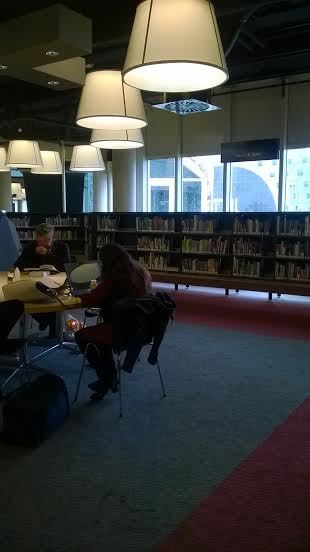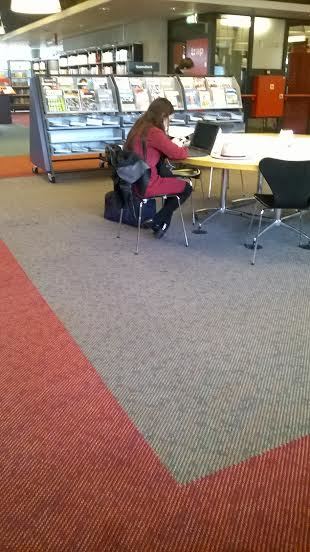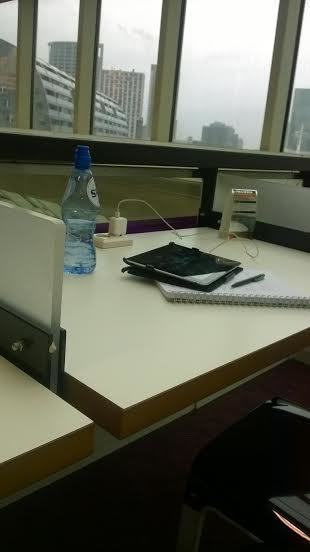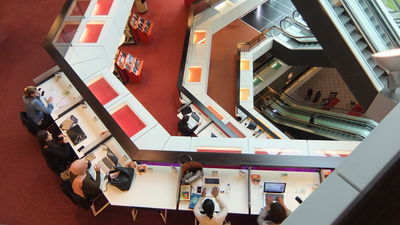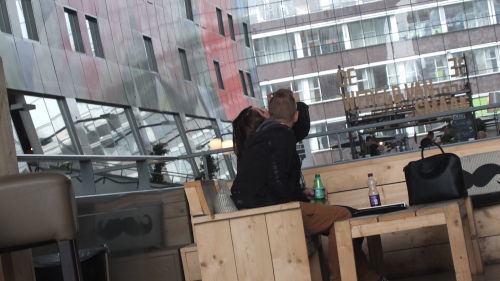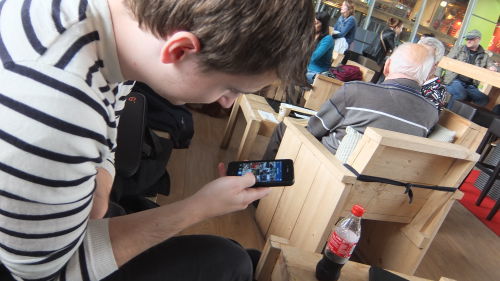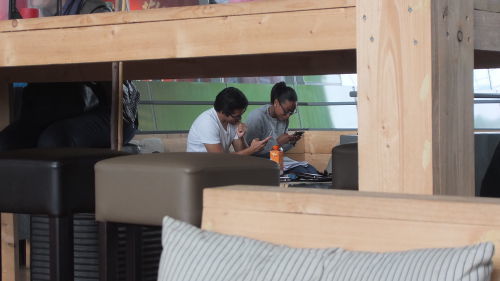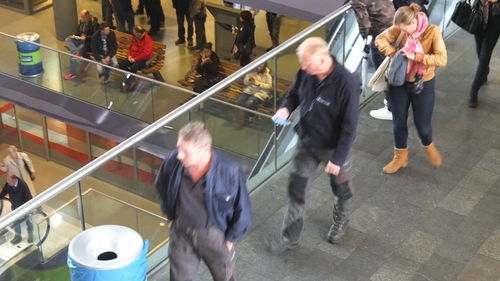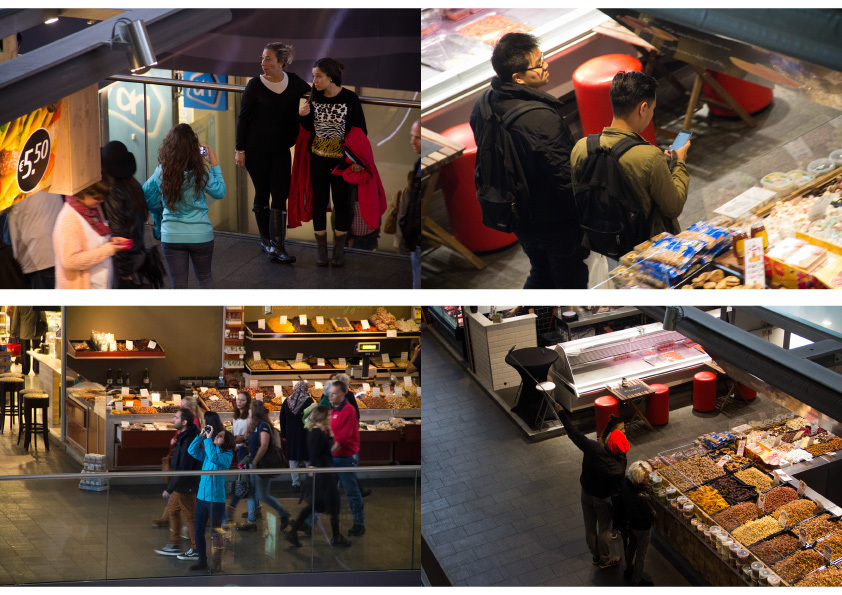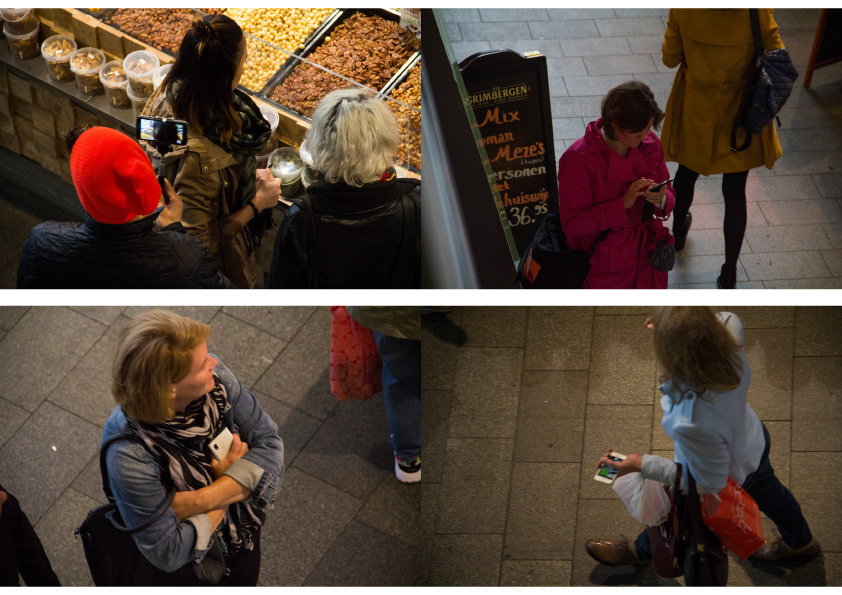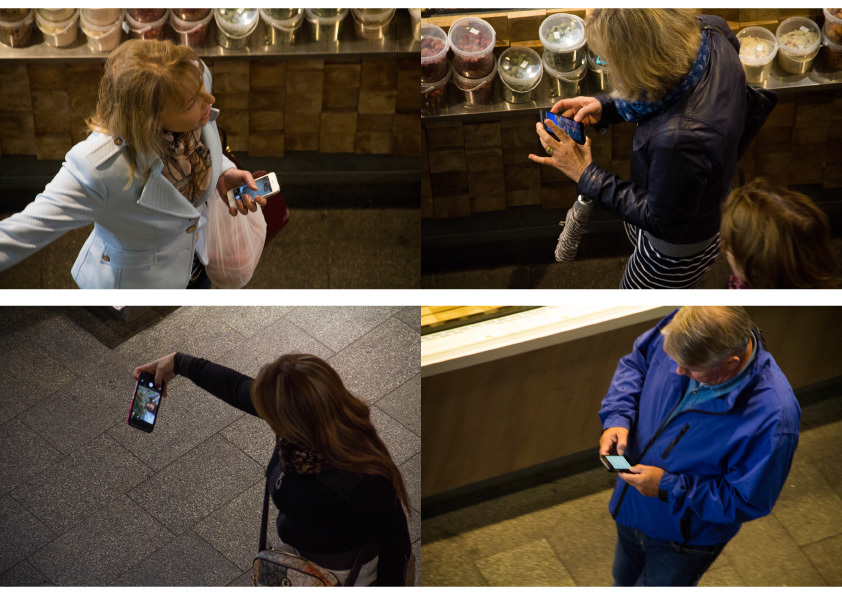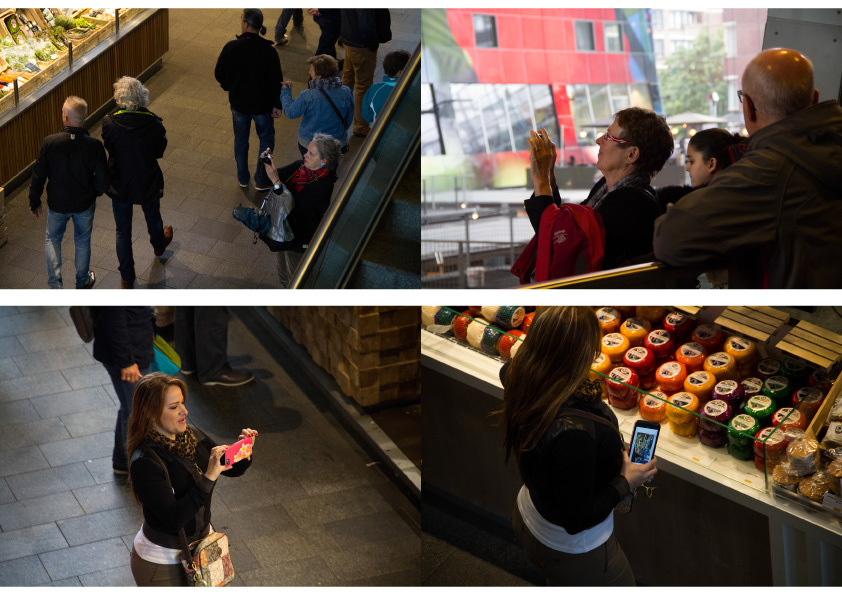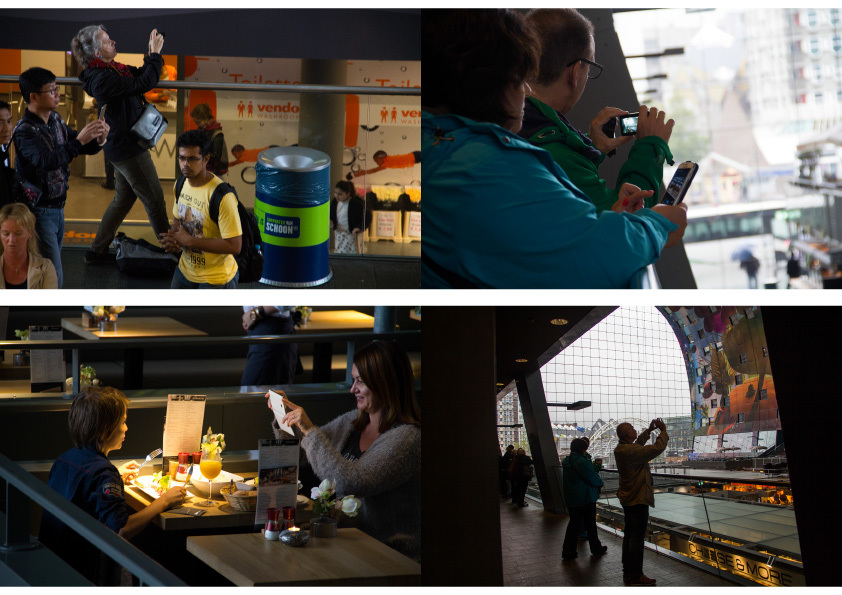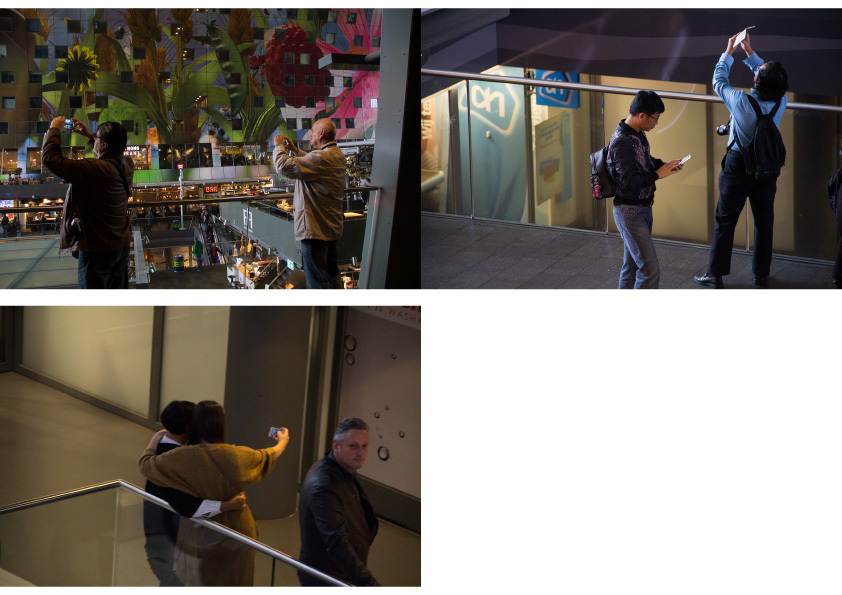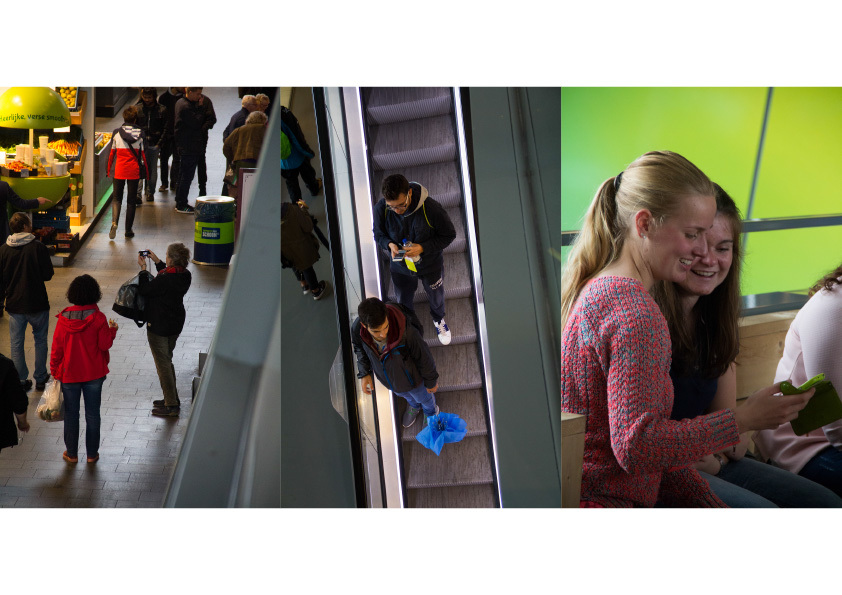Difference between revisions of "Unraveling the infra-ordinary"
Jump to navigation
Jump to search
LarsNoback (talk | contribs) |
LarsNoback (talk | contribs) |
||
| Line 44: | Line 44: | ||
* about half of the people there eventually would take out their phone or camera to take a picture | * about half of the people there eventually would take out their phone or camera to take a picture | ||
* people walk with their camera app open, looking for photo-opportunities | * people walk with their camera app open, looking for photo-opportunities | ||
| − | * people don't take time to look at anything, only through their camera | + | * people don't take time to look at anything, only through their camera even when they're with other people |
* people don't notice other people around them when on their phone | * people don't notice other people around them when on their phone | ||
| − | *which causes them to move very slowly and bump into other people | + | * which causes them to move very slowly and bump into other people |
* people follow each other to take the same photo's | * people follow each other to take the same photo's | ||
| + | * people take photos of everything, even boring/normal things | ||
| + | * once the picture is taken, the moment is gone | ||
| + | |||
| + | Conclusion: | ||
| + | * even when people are physically present in an area with interactive beings and social elements, they're not completely mentally focused on their surroundings (even though they're there as visitors). | ||
| + | * they're more focused on their reality through their screen and on what they can share online. | ||
| + | * they're alway busy with their online profile and not so much with their physical self. | ||
| + | * people don't live in the moment or take time to actually look at where they are | ||
| + | |||
At the library we noticed that: | At the library we noticed that: | ||
| Line 53: | Line 62: | ||
* most people do not have books with them | * most people do not have books with them | ||
* people are still busy with snapchat, instagram, facebook, etc. | * people are still busy with snapchat, instagram, facebook, etc. | ||
| + | |||
| + | Conclusions: | ||
| + | * people go to the library to have a quiet space to focus on their work, but cannot be detached from their digital devices. | ||
| + | * even when they're looking for a place to be alone, they still need to be a part of happening. | ||
Revision as of 16:18, 22 September 2015
Contents
UNRAVELLING THE INFRA-ORDINARY
INTRODUCTION
DESCRIPTION
Design/make/craft one or more objects, spaces (or both) that address changes in physical and/or social behaviour in public and private space due to digital devices. The final design must be based on findings from your initial research and should relate to a clearly articulated perspective. Examples of possible perspectives are: critical, speculative, practical, visionary or other.
KEYWORDS AND FACTS
- WI-FI
- Overflowing Informations
- Exhibition Through Phone
- Out Of Battery can change you Plans
- Biohacking
OBSERVATION
LIBRARY
MARKTHAL
FINDINGS
At the Markthal we noticed that:
- about half of the people there eventually would take out their phone or camera to take a picture
- people walk with their camera app open, looking for photo-opportunities
- people don't take time to look at anything, only through their camera even when they're with other people
- people don't notice other people around them when on their phone
- which causes them to move very slowly and bump into other people
- people follow each other to take the same photo's
- people take photos of everything, even boring/normal things
- once the picture is taken, the moment is gone
Conclusion:
- even when people are physically present in an area with interactive beings and social elements, they're not completely mentally focused on their surroundings (even though they're there as visitors).
- they're more focused on their reality through their screen and on what they can share online.
- they're alway busy with their online profile and not so much with their physical self.
- people don't live in the moment or take time to actually look at where they are
At the library we noticed that:
- almost all people have either a phone or laptop at their side at all time
- most people do not have books with them
- people are still busy with snapchat, instagram, facebook, etc.
Conclusions:
- people go to the library to have a quiet space to focus on their work, but cannot be detached from their digital devices.
- even when they're looking for a place to be alone, they still need to be a part of happening.
